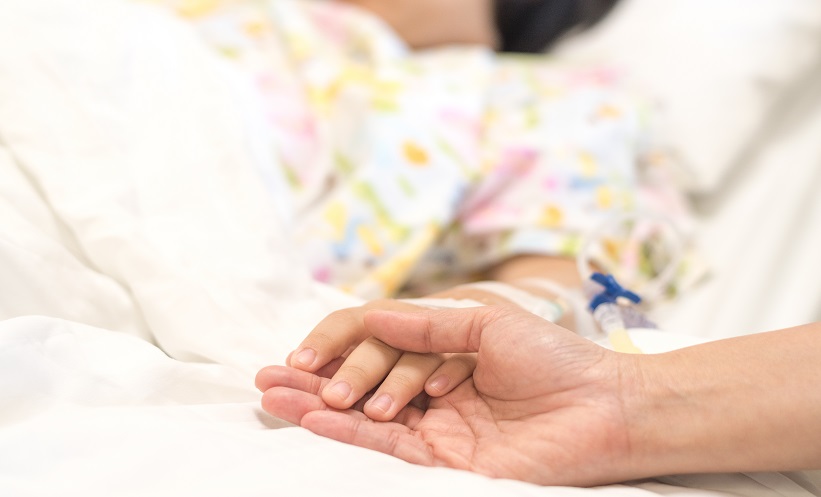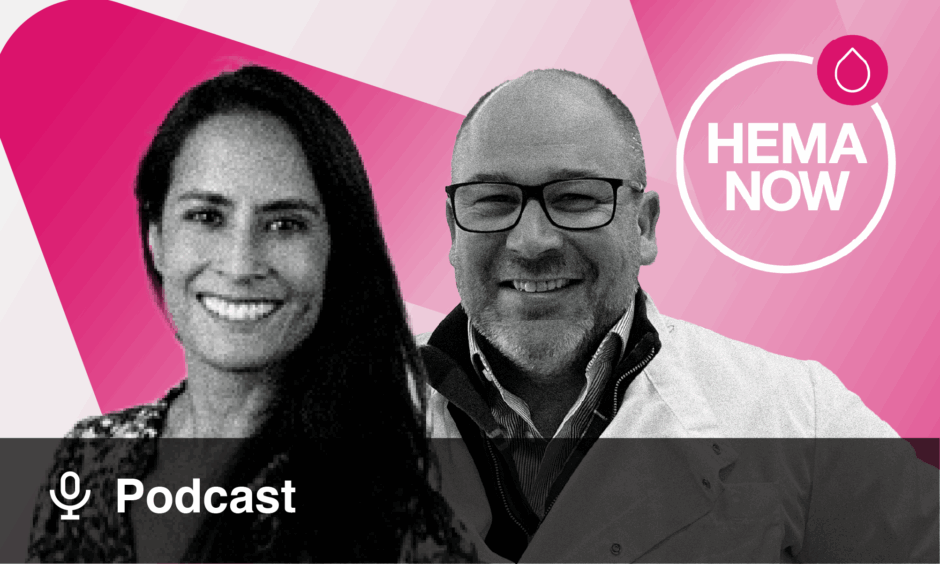Presenter: Peter Borchmann University of Cologne, Germany
Disclosure: Borchmann has received support from Takeda, Bristol Myers Squibb, Roche, Amgen, Novartis, Celgene, Miltenyi Biotec, and Gilead.
Acknowledgements: Writing assistance was provided by Jennifer Taylor, London, UK.
Support: The publication of this article was funded by Miltenyi Biomedicine GmbH.
Citation: EMJ Hematol. 2022;10[1]:29-31. DOI/10.33590/emjhematol/22C0248. https://doi.org/10.33590/emjhematol/22C0248.
Presentation Summary
Presenting at the European Hematology Association (EHA) 2022 Congress, Peter Borchmann from the University of Cologne, Germany, discussed a novel tandem cluster of differentiation (CD) 19 and CD20 chimeric antigen receptor (CAR)-T therapy for the treatment of patients with relapsed or refractory B cell non-Hodgkin lymphoma. Borchmann presented the 2-year follow up data from DALY 1 trial, which showed that beyond a favourable safety profile, zamtocabtagene autoleucel (MB-CART2019.1) led to durable complete remissions.Zamtocabtagene Autoleucel
Peter Borchmann
Not all patients with diffuse large B cell lymphoma (DLBCL) achieve durable benefit with approved CD19 CAR-T cell therapies, indicating a significant unmet clinical need.1-3 Up to 50% of patients relapse after CD19-directed CAR-T cell therapy, possibly due to CD19 antigen escape and T cell exhaustion.4,5 Targeting one B cell antigen may lead to selective pressure with antigen escape and subsequent relapse,1,6 suggesting that targeting more than one antigen may improve efficacy by reducing potential downregulation of cell-surface markers and subsequent relapse.
Zamtocabtagene autoleucel (MB-CART2019.1), an investigational medicinal product, is composed of autologous CD4- and CD8-enriched cells, which are transduced with a lentiviral vector encoding the CAR construct for CD20 (Leu16) and CD19 (FMC63) and incorporating a 4-1BB co-stimulatory domain. At the EHA2022 Congress, Borchmann presented the 2-year follow-up data from the Phase I/II trial of zamtocabtagene autoleucel, DALY 1 (NCT03870945).7,8
DALY 1 is a first-in-human Phase I/II study conducted to evaluate feasibility, dosage, safety, and toxicity of zamtocabtagene autoleucel-expanded autologous T cells that are genetically modified to express an anti-CD20 and CD19 immunoreceptor. The study population consisted primarily of older patients with relapsed/refractory (R/R) CD20- and CD19-positive aggressive B cell non-Hodgkin lymphoma.
Two dose levels (DL) were tested in the trial. DL1 was 1.0×106 CAR-T cells/kg body weight and was allocated to patients with R/R CD20- and CD19-positive B cell non-Hodgkin lymphoma with no curative treatment options. In DL2, 2.5×106 CAR-T cells/kg body weight were administered to patients with R/R DLBCL and one prior line of treatment, who were ineligible for high-dose chemotherapy and stem cell transplantation. All patients underwent lymphodepleting chemotherapy using fludarabine and cyclophosphamide and all received an infusion of fresh zamtocabtagene autoleucel 14 days after leukapheresis.
The primary endpoint was the maximum tolerated dose of zamtocabtagene autoleucel, which was defined as the highest dose level at which <33% patients experienced dose-limiting toxicity (DLT) until Day 28 after the infusion of zamtocabtagene autoleucel. Secondary endpoints included adverse events, objective response rate, duration of response, maximum concentration, area under the curve from Day 0 to 28, and the persistence of CAR-T cells assessed by flow cytometry performed during the trial follow-up period.
The trial enrolled 12 patients, of which six were allocated to DL1 and six to DL2. The median age was 72 years (range: 20–78 years), and eight patients were >70 years. The histologies of trial participants distinguished diffuse large B cell lymphoma (n=9), transformed follicular lymphoma (n=2), and mantle cell lymphoma (n=1).
Regarding safety and toxicity, no DLTs were observed, and 2.5×106 CAR-T cells/kg body weight is now considered the recommended dose for further trials. No Grade ≥3 cytokine release syndrome (CRS) or neurotoxicity were observed. In addition, haematotoxicity was limited, with no anaemia or thrombocytopenia of Grade ≥3 beyond Day 28, and intermittent neutropenia Grade ≥3 in only two patients beyond Week 8 after treatment.
Turning to efficacy, the objective response rate (complete remission [CR] plus partial remission using the Lugano classification)9 was 75% (three out of six patients on DL1 and six out of six patients on DL2). CR was achieved in five out of 12 patients (three out of six patients on DL1 and two out of six patients on DL2), according to investigator assessment after PET-CT. All five patients who achieved CR (CR group) had ongoing CR at 12 months, according to PET-CT or CT assessment. At the 2-year follow-up visit, investigator assessment determined that none of the five patients had evidence of relapse. Progression between 2–6 months was observed in the four out of 12 patients who had only a partial response to MB-CART2019.1 as best overall response, as well as in the three out of 12 patients with only stable disease at best overall response.
Immunomonitoring revealed that clinical efficacy corresponded to better CAR-T expansion. All patients with CR had a maximum concentration of ≥460 CAR-T cells/µL, and also a higher area under the curve from Day 0 to 28 as opposed to patients who did not reach CR. Finally, all five patients who achieved CR had detectable CAR-T cells beyond Month 6.
Conclusion
Zamtocabtagene autoleucel (MB-CART2019.1) showed very good safety and the first evidence of promising efficacy in a truly elderly patient cohort. It was successfully manufactured and infused in all 12 patients, and both DLs were well tolerated, with no DLT. The favourable safety profile comprised no Grade ≥3 CRS events nor neurotoxicity at either DL, leading to the recommended dose of MB-CART2019.1 of 2.5×106 CAR-T cells/kg body weight. It was notable that MB-CART2019.1 induced CR in five out of 12 patients. Clinical response was accompanied by higher peak CAR-T cell expansion. Importantly, CRs were durable as all patients who achieved CR had 2-year follow-up visits with no evidence of relapse or need for new anti-lymphoma therapy.
These promising results of zamtocabtagene autoleucel (MB-CART2019.1) in elderly patients with R/R DLBCL represent the rationale for the ongoing randomised Phase II trials, DALY 2-EU (NCT04844866)10 and DALY 2-USA (NCT04792489).11 DALY 2-EU is currently enrolling and investigating the superiority of MB-CART2019.1 over conventional immune-chemotherapy in older patients with R/R DLBCL, who are not eligible for high-dose chemotherapy or autologous stem cell transplantation.10 DALY 2-USA is currently enrolling and investigating MB-CART2019.1 in adults with R/R DLBCL after receiving at least two lines of therapy.11






